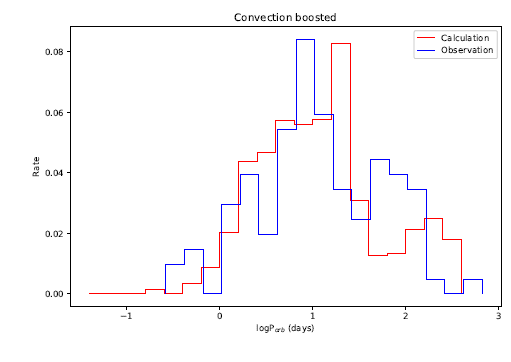

Evolution of LMXBs under Different Magnetic Braking Prescriptions
MB plays a vital role in LMXB evolution; however, its mechanism has not been well understood. The traditional MB law faces difficulties in explaining the observational characteristics of LMXBs and MSPs, such as the discrepancy between the calculated MT rates and the observed mass accretion rates of LMXBs and the conflict between the calculated and observed orbital period distribution of BMSPs.
There are various alternative proposals for the MB laws and we combine detailed binary evolution calculation with binary population synthesis to examine their influence on LMXB evolution. We mainly compare the MT rates of LMXBs and the orbital period distribution of binary pulsars with observations. In addition, we explore the formation efficiency of binary pulsars with

Table 1 : Comparison of the Effectiveness of Different MB Models in Reproducing the Properties of Persistent (Upper) and Transient (Lower) LMXBs



Figures: Comparison of the calculated orbital period distributions of binary pulsars with observations, which are shown with the red and blue curves, respectively.
Contact: DENG Zhuling
Xinjiang Astronomical Observatory, Chinese Academy of Sciences
Email: dengzhuling@xao.ac.cn
Attachment Download: